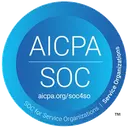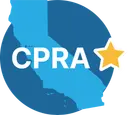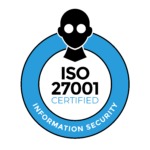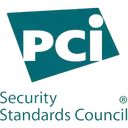FedRAMP compliance is a comprehensive security framework that enables cloud service providers to serve U.S. federal agencies. This standardized program ensures federal agencies maintain consistent, rigorous security standards when adopting cloud services—protecting sensitive government data while delivering the efficiency benefits of cloud computing.
The program applies to any cloud service provider seeking to offer services to federal agencies, from small SaaS applications to large-scale infrastructure platforms. As federal agencies increasingly rely on commercial cloud solutions, FedRAMP has become essential for companies wanting to access this substantial market opportunity.
What FedRAMP is
FedRAMP originated in 2011 under the General Services Administration (GSA) and operates through the FedRAMP Program Management Office (PMO). The program’s core purpose is to provide a “do once, use many times” framework for cloud security authorizations. Rather than each federal agency conducting separate security assessments for the same cloud service, FedRAMP enables one authorization to be leveraged across multiple agencies.
The program’s scope covers all cloud service models—Infrastructure as a Service (IaaS), Platform as a Service (PaaS), and Software as a Service (SaaS)—and encompasses both public and private cloud deployments serving federal agencies.
Core requirements and principles
FedRAMP builds upon the National Institute of Standards and Technology (NIST) SP 800-53 security controls framework, implementing hundreds of specific security requirements across three categories:
Management controls focus on governance, risk management, and administrative processes. These include security planning, personnel security, and incident response procedures.
Operational controls address day-to-day security operations such as access management, system monitoring, configuration management, and physical security measures.
Technical controls encompass the technological safeguards including encryption, network security, system hardening, and vulnerability management.
Key principles underlying all FedRAMP requirements include continuous monitoring, defense-in-depth security architecture, least-privilege access, and comprehensive documentation of all security measures and processes.
Impact levels and categories
FedRAMP defines security requirements based on the potential impact of a security breach:
FedRAMP Low applies to systems where loss of confidentiality, integrity, or availability would have limited adverse effects. This level requires implementation of approximately 125 security controls and is suitable for public-facing applications with minimal sensitive data.
FedRAMP Moderate covers systems where security breaches could have serious adverse effects. This level mandates roughly 325 security controls and applies to most federal agency systems handling moderate-sensitivity data.
FedRAMP High addresses systems where security failures could have severe or catastrophic effects. This most stringent level requires over 420 security controls and applies to systems handling highly sensitive data or supporting critical government operations.
FedRAMP LI-SaaS (Low Impact Software as a Service) provides a streamlined path specifically for low-risk SaaS applications, requiring about 90 security controls with simplified documentation requirements.
The compliance process
Achieving FedRAMP compliance involves several distinct phases, typically spanning 12-24 months depending on system complexity and organizational readiness.
The preparation phase involves conducting gap analyses, implementing required security controls, developing documentation packages, and selecting a Third Party Assessment Organization (3PAO). You must prepare comprehensive System Security Plans (SSPs), policies and procedures, and continuous monitoring plans.
During the assessment phase, your selected 3PAO conducts independent testing and evaluation of implemented security controls. This includes vulnerability scanning, penetration testing, configuration reviews, and documentation analysis. The 3PAO produces a Security Assessment Report (SAR) detailing all findings.
The authorization phase varies by pathway. You can pursue agency sponsorship, where a federal agency reviews the assessment package and grants an Authority to Operate (ATO). Alternatively, you can seek Joint Authorization Board (JAB) authorization for broader federal use, though this pathway involves more rigorous review processes.
The continuous monitoring phase begins immediately upon authorization and continues throughout the system’s operational life. This includes monthly vulnerability scans, annual assessments, incident reporting, and ongoing security control monitoring.
Key stakeholders include your internal compliance team, 3PAO assessors, sponsoring agency representatives, and FedRAMP PMO staff who provide guidance throughout the process.
Common compliance challenges
Organizations frequently encounter several obstacles during their FedRAMP journey. Documentation complexity often proves overwhelming, as FedRAMP requires extensive, detailed documentation that must be precisely formatted and comprehensive. Many organizations underestimate the effort required to produce quality SSPs and supporting materials.
Technical implementation gaps commonly emerge when existing systems lack required security controls. You may need significant architectural changes to meet encryption standards, implement proper access controls, or establish continuous monitoring capabilities.
Resource allocation challenges occur because FedRAMP demands sustained commitment of skilled personnel. Many organizations struggle to dedicate sufficient security expertise while maintaining business operations.
Timeline management becomes difficult due to the program’s complexity and interdependencies. Delays in one phase cascade through the entire process, and organizations often underestimate the effort required for remediation activities.
Cost management proves challenging as expenses accumulate across consulting fees, 3PAO assessments, system modifications, and ongoing monitoring requirements. Initial cost estimates frequently prove insufficient.
Benefits of FedRAMP compliance
Achieving FedRAMP authorization delivers substantial business advantages. Market access represents the most immediate benefit, opening opportunities within the federal government’s significant cloud services budget. FedRAMP-authorized services can be marketed across multiple agencies, dramatically expanding your addressable market.
Competitive differentiation results from FedRAMP’s rigorous security standards. The authorization signals to both government and commercial customers that your organization maintains enterprise-grade security practices.
Operational improvements often emerge from implementing FedRAMP controls. Organizations typically develop stronger security postures, better incident response capabilities, and more mature risk management processes.
Customer trust increases significantly, as FedRAMP authorization provides third-party validation of your security practices. This credibility extends beyond government customers to commercial enterprises seeking secure cloud solutions.
Revenue stability comes from federal contracts, which typically offer longer terms and more predictable revenue streams than commercial arrangements.
Who needs FedRAMP and when
FedRAMP is mandatory for cloud service providers seeking to serve federal agencies. This includes established technology companies expanding into government markets, startups developing solutions for federal use cases, and existing government contractors transitioning to cloud-based offerings.
Software-as-a-Service companies need FedRAMP when their applications handle, process, or store federal data. This includes productivity tools, specialized agency applications, and industry-specific solutions.
Infrastructure and platform providers require FedRAMP authorization when offering hosting, development environments, or managed services to federal agencies.
System integrators and consultants increasingly need FedRAMP-authorized platforms to support their federal projects and demonstrate security capabilities.
You should begin the FedRAMP process 18-24 months before planned federal market entry, allowing sufficient time for implementation and authorization activities.
Preparation strategies
Successful FedRAMP preparation begins with comprehensive gap analysis comparing your current security posture against required controls. You should prioritize high-impact security improvements and develop realistic implementation timelines.
Documentation preparation should start early, as quality documentation takes substantial time to develop. You should establish clear templates, assign dedicated technical writers, and implement rigorous review processes.
Security architecture assessment helps identify necessary system modifications. You may need to implement encryption, enhance logging capabilities, or restructure network architectures to meet FedRAMP requirements.
Vendor evaluation for 3PAO selection should consider experience, cost, timeline, and cultural fit. Early 3PAO engagement can provide valuable guidance during preparation phases.
Internal team development ensures you have necessary expertise.

Related Posts
Stay connected
Subscribe to receive new blog articles and updates from Thoropass in your inbox.
Want to join our team?
Help Thoropass ensure that compliance never gets in the way of innovation.












.png)